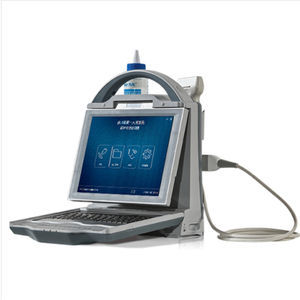
- Medical Imaging
- Radiology
- Ultrasound bone densitometer
- Pinyuan Medical
- Company
- Products
- Catalogs
- News & Trends
- Exhibitions
Ultrasound bone densitometer BMD-C3for forearm bone examinationfor tibia bone examination
Add to favorites
Compare this product
Characteristics
- Bone densitometer type
- ultrasound
- Type of imagery
- for forearm bone examination, for tibia bone examination
Description
Bmd-C3 is a portable ultrasonic bone density instrument for measuring bone density. The device could be used for disease diagnosis, or for disease screening and physical examinations in healthy people. Ultrasonic bone density instrument than DEXA bone density instrument cost-effective, simple operation, no radiation, high precision, less investment. A bone density test, sometimes called a bone density test, can detect if a patient has osteoporosis.
When you have osteoporosis, your bones become weak. They become more prone to rupture. Bone joint pain and fracture caused by osteoporosis are common clinical diseases, such as lumbar deformation, intervertebral disc disease, vertebral body fracture, cervical spondylosis, limb joint and bone pain, lumbar spine, femoral neck, radial fracture, etc. Therefore, bone mineral density examination is very necessary for the diagnosis and treatment of osteoporosis and its complications.
Bone Density Testing Results Will Be In The Form Of Two Scores
T score: This compares your bone density with a healthy, young adult of your gender. The score indicates if your bone density is normal, below normal, or at the levels that indicate osteoporosis.
Here’s what the T score means:
● -1 and above: Your bone density is normal
● -1 to -2.5: Your bone density is low, and it may lead to osteoporosis
● -2.5 and above: You have osteoporosis
Z score: This allows you to compare how much bone mass you have compared with other people of your age, gender, and size.
A Z score below -2.0 means that you have less bone mass than someone your age and that it could be caused by something other than aging.
Catalogs
No catalogs are available for this product.
See all of Pinyuan Medical‘s catalogs*Prices are pre-tax. They exclude delivery charges and customs duties and do not include additional charges for installation or activation options. Prices are indicative only and may vary by country, with changes to the cost of raw materials and exchange rates.



